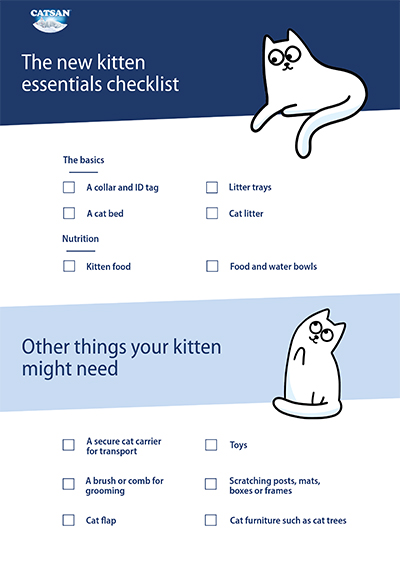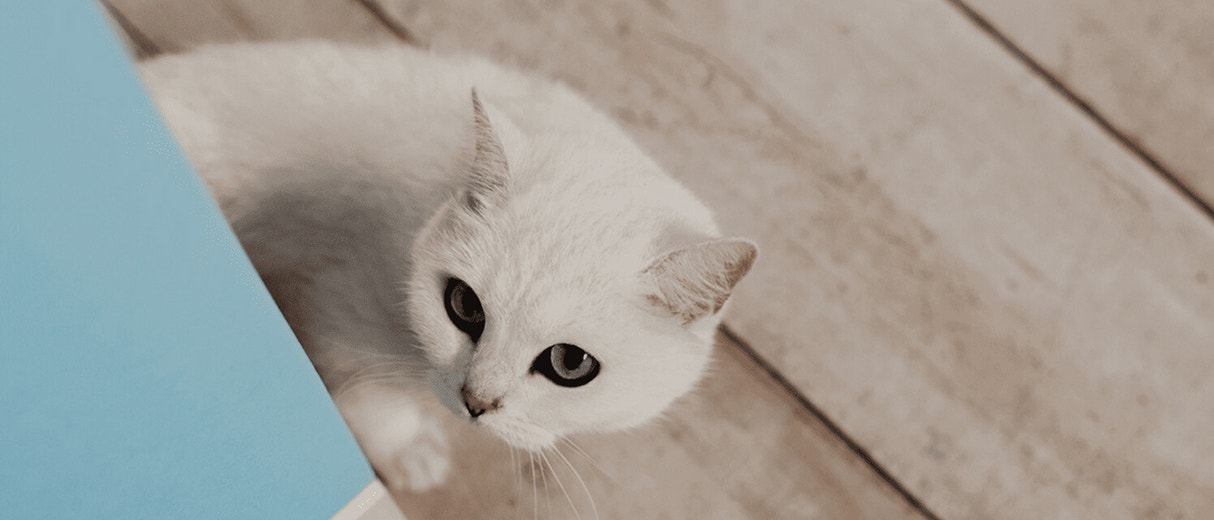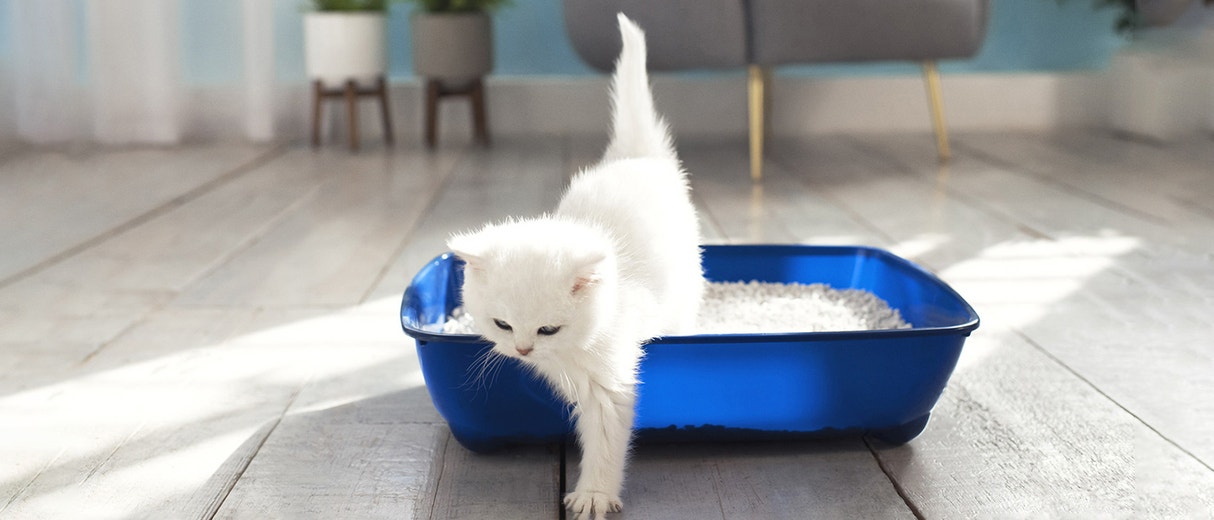
The new kitten checklist: top tips for bringing a new kitten home
What to think about before getting a kitten
If you’re still at the stage of daydreaming about bringing a new kitten into your family, it’s important you think carefully about whether you’re fully prepared to take on the responsibility. Here are a few things to consider:
The cost
Your kitten will need some essentials now (see the list below) but there are also ongoing costs such as food and vets’ bills.
Your home
Is your home cat-friendly and, if not, are you prepared to make the changes necessary to make it so? Cats like multiples of beds and litter boxes in different places around the house, for example, and will appreciate having quiet places they can take themselves off to if they don’t want to be disturbed.
Your family
Do you have young children and/or other pets? If so, are you confident everyone will get along?
Time
Do you have the time a new kitten requires? Some people find adopting an adult cat works better with their lifestyle.
How to prepare for a kitten
If you have decided you are bringing a kitten into your home there are a few things you’ll need to do beforehand:
Buy supplies
Our handy checklist (below) will help make sure you don’t forget any of the things your kitten needs.
Prepare your home
Kittens have an uncanny knack of getting into mischief so it’s important you make your home safe for them by removing hazards and things that are toxic. How to kitten-proof your home has all the advice you need. As well as safety-proofing, you’ll want to set up your kittens’ things, from food and water bowls to beds and litter trays.
Register with a vet and think about pet insurance
The time to register with a good local vet is not when your furry friend is under the weather but before they even set paw in your home. It’s also worth talking to your vet about pet insurance as this can avoid you being hit by sudden, unexpected costs.
- A collar and ID tag
Make sure you regularly check your kitten’s collar because, as they’ll be growing all the time, you need to make sure it hasn’t become too tight. If you’re planning on letting your kitten outside, they will also need an ID tag because, although all cats should be microchipped, and ID tag makes them quickly identifiable if they go astray. Don’t forget you shouldn’t let your kitten out until they are fully vaccinated and have been home for two weeks or more so are familiar with their surroundings. - Kitten food
Kittens have different dietary needs to adult cats and need extra protein, vitamins, minerals, and fats. You can choose dry or wet food, but make sure it’s specially formulated for kittens. - Food and water bowls
Whether you go for plastic, stainless steel or ceramic bowls, it’s important you clean them daily. - A cat bed
Your kitten will still have quite a bit of growing to do. This presents you with a dilemma: Do you pick a kitten-sized bed or a bigger bed your furry friend can use forever? If you go for the latter, you can always use a rolled-up blanket to create a smaller, cosier space for your kitten.
- Litter trays
The most important thing when it comes to a litter tray for your kitten is that it’s easy for them to get in and out of with their little legs. This means avoiding trays with very high sides. - Cat litter
Don’t miss the advice below on picking the right litter for your kitten. - A secure cat carrier for transport
A high-quality cat carrier is essential, whether you just need it for trips to the vet or you and your kitten will be travelling further afield. Look for something durable, safe and comfortable. - A brush or comb for grooming
It’s great to get into the habit of grooming your kitten regularly. This will help get your furry friend used to being handled, keep their coat in tip-top condition (grooming is obviously particularly important for long-haired cats) and be a bonding experience.
Other things you might like for your kitten
- Cat flap
If you are planning on letting your kitten go outside, you will meed to install a cat flap. If you don’t want your neighbour’s cat wandering in and out, you may want to look at a cat flap that’s opened by your cat’s microchip. - Toys
There is a dizzying array or cat toys on the market and different cats will have different preferences. Some will go mad for teasers, for example, whereas for others catnip-filled toys will be like, well, catnip! Experiment to see what your kitten likes best. - Scratching posts, mats, boxes, or frames
Scratching and jumping up are both natural feline behaviours, and they are important for things such as claw health and scent marking. This means if you want to safe your sofas, it’s best to give your kitten something else to scratch! - Cat furniture such as cat trees
Cats love to climb and explore so you can enrich their lives by making sure you’ve got suitable cat furniture for that.
Pick the right type of litter
You should use a coarse-grained, non-clumping litter such as CATSAN™ Hygiene Non-clumping Litter. This is because kittens, being curious little creatures, have a tendency to eat their litter and a non-clumping litter is likely to do less harm if ingested. As well, as picking the right type of litter, you’ll also need to choose the right litter tray and position it in a cat-friendly spot. Where to put the cat litter box: the dos and don’ts will help with this.
What to do the first night with a kitten
Even a kitten who has seemed brave and confident all day long can struggle when it’s bedtime in a new home and they are far from their mum and littermates. Your kitten may find it comforting to have their bed near yours but, if you’re not comfortable with that, just make sure their bed is somewhere warm and safe.
How to litter train a kitten
A lot of kittens watch their mums use the litter box and copy that behaviour. Which means some people find that by the time they bring a kitten into their home, they’ve already got the right idea about what they need to do. However, even if your kitten doesn’t fall into this camp, rest assured that litter training a kitten is usually very straightforward (cats being both intelligent and clean). How to litter train a kitten: our quick and easy guide will tell you all you need to know.
What to do if your kitten doesn’t use the litter tray
There are lots of different reasons why your kitten might eliminate outside of the litter box. Maybe it’s because they just haven’t got the hang of it yet or maybe they don’t like where you’ve put their litter box. Want more advice? Check out Help, my cat is refusing to use the litter box.
How long does it take a kitten to adjust to a new home?
Your new kitten is a unique individual so it’s impossible to say exactly how long it will take them to feel at home. For some, the settling in period can be a matter of hours, whereas a more timid cat might take several weeks. The important thing is that you remain calm and patient, confident in the knowledge it will happen.











